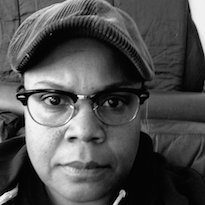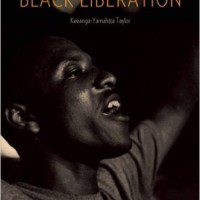“I want to live until I’m 18… You want to get older. You want to experience life. You don’t want to die in a matter of seconds of because of cops.” – Aniya, 13, marching in Staten Island, New York, 2015
President Obama has said racism is “no longer endemic, or sanctioned by law and custom.” Can America be racist if there’s a Black man in the White House who says racism is dying? Can America be racist with its two consecutive Blacks serving as the leading attorneys in the nation?
In From #BlackLivesMatter to Black Liberation, Keeanga-Yamahtta Taylor argues that, yes, America can be racist despite Black leaders, and in fact such superficial gains for Blacks mask far-reaching structural discrimination in housing, education, employment, and policing. Meanwhile, the news media by and large serves as a microphone for cultural racism. After the Ferguson police left murdered Michael Brown’s body in the road for four hours and held back his parents with dogs and guns, the New York Times declared Brown was “no angel” as he occasionally smoked marijuana and sometimes listened to rap. From #BlackLivesMatter to Black Liberation is a guide to what has happened and what’s next for people involved in this struggle.
A major theme of Taylor’s work is the dilemma posed by supposed allies who are working against the cause. To that end, Taylor identifies racism as having three historical molds: a biological form (certain races are “naturally” superior); newer, often misguided concepts of color blindness (race is artificial); and a “culture of poverty” (perceptions of Black laziness, excuses, diet, absentee fathers, etc.). The latter narrative, she says, “works to deepen the cleavages between groups of people who would otherwise have every interest in combining forces.”
Taylor dissects the tangling of class and race in American history by examining Karl Marx’s letters to Abraham Lincoln and Lincoln’s thoughts on Blacks revolting against racists after the war. In one of his less-well-known quotes, Lincoln called the Civil War “a unholy war of property against labor.” Taylor tracks similarities between communists, labor, and the Black Panther Party, but she never really makes clear if she believes that Fanon-esque armed struggle or political pressure will be the straw that breaks the camel’s back. Taylor’s survey of the twentieth century is reminiscent of a scene in Malcolm X about the different types of Black leaders who attracted followers in the midcentury. Audiences see three men on soapboxes: an evangelist, an Al Sharpton-look-a-like, and a young Nation of Islam leader. Taylor calls what became the proceeding generation of these figureheads, “black faces in high places.”

In the strongest sections of her book, Taylor critiques President Obama and civil rights leader Al Sharpton. “Since Obama came into office, Black median income has fallen by 10.9 percent to $33,500, compared to a 3.6 percent drop for whites, leaving their median income at $58,000.” Obama, a Black from working-class background, espouses the damning “culture of poverty” racism. He explains his My Brother’s Keeper initiative as “not some big new government program… [but] a more focused effort on boys and young men of color who are having a particularly tough time. And in this effort, government cannot play the only—or even the primary—role.” Like many leftists, Taylor is disgusted: “We are led to believe that a man who can direct drone strikes in the mountains of Pakistan and Afghanistan… is powerless to argue, fight, and champion for legislation and the enforcement of existing laws and rights in the interest of racial justice.”
Black Lives Matter began in a unique historical moment, which Taylor presents as a series of events and sentiments. The Patriot Act foreclosed the years after September 11, 2001 and legalized racial profiling. In 2005, Hurricane Katrina exposed that a Third World country existed in America. In 2007, the Black community in Louisiana was galvanized into organizing mass mobilizations the likes of which had not been seen in decades. The Jena 6 were six Black minors who assaulted a seventeen-year-old white boy—the hanging of nooses on their school’s property and an overzealous prosecution, (trying the boys as adults) led to public outrage.
In those years, discontent was often linked to George W. Bush. But Occupy and the recent police violence have happened under a Black president. Two million more Blacks voted in 2008 than in 2004, and with Obama’s election, the media declared a new “post-racial” era had begun. Oscar Grant—twenty-two-year-old, face down, handcuffed, and unarmed—was murdered by police on New Year’s Day and his killing was captured by several smartphone cameras. Thousands of people took to the streets while Forbes magazine declared “Racism in America is Over.”
Taylor argues that “Black people in America cannot ‘get free’ alone.” Indeed, a collaborative cross-class, cross-race effort is a large part of the struggle. She suggests that Black Lives Matter needs to collaborate with and embrace other minority movements to ferment change. She decries the idea that after the racist murder of three Muslim students at UNC-Chapel Hill in 2015, Black Lives Matter called #MuslimLivesMatter an appropriation. Perhaps no group is more ready to destroy the status quo than the Black working class, but Black Lives Matter needs to work harder to recruit Muslims, Native Americans, and Latinos, and continue to inspire female leaders.
Taylor’s plans may sound radical, but when nominally Black-friendly groups like Al Sharpton’s National Action Network and the Congressional Black Caucus receive millions from Walmart, McDonalds, and ALEC (which infamously subsidizes voter suppression and Stand Your Ground laws), decentralized mass-mobilization may be the only realistic option for change.




